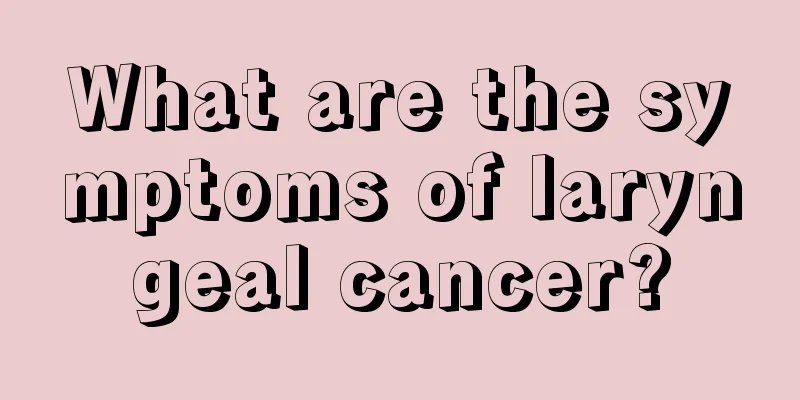What are some tips for curing tearful eyes?

|
In real life, tears are a common condition. Usually, when we are in the wind or blinking, the tear glands in the eyes will secrete tears, resulting in tears. There are many ways to improve tears. You can stay away from the source of tears and pay more attention to the maintenance of the eyes. You can use some eye drops to protect your eyes and apply hot compresses appropriately. Treatment for tearing eyes [Avoid factors that cause tears] When the temperature drops or there is stimulation from cold wind, tears will flow out quickly and the patient's eyes will feel itchy and astringent. Therefore, we should pay attention to the hygiene of our eyes at ordinary times. We can rinse them with saline solution. When there is too much dust in the surrounding environment, we should pay attention to protecting our eyes. [General care in daily life] When we encounter dry weather like autumn, it will easily lead to dehydration, so we should eat more fruits and drink more water. If you have tears in the wind, you can use hot compresses, acupuncture, and Chinese medicine to treat them. You can also use some antibiotic eye drops (chloramphenicol eye drops) to treat them. [Lifestyle and Diet Care] Patients who often shed tears should pay special attention to their diet, and eat light food. They can eat more carrots rich in vitamin A and drink more water. Lycium barbarum is helpful for the metabolism of photoreceptor cells in the retina. You can make tea appropriately for about 10 to 15 minutes, and drink about 30 to 50 grams of wolfberry every day. You can use boiling water to soak wolfberry, drink the water, and eat wolfberry. Causes of tears Under normal circumstances. After every blink of an eye. The tears secreted by the lacrimal glands and accessory lacrimal glands reach a balance through the tear excretion system or evaporation. The tears cover the entire surface of the eyeball to keep the eyeball moist and comfortable, and we do not feel the tears. When the tear secretion is too much or there is a problem with the tear excretion system. We will feel tears. Excessive tear production can be caused by a variety of factors, including mental stimulation. Reflex stimulation of foreign bodies; the effects of drugs such as choleretic drugs and anticholinesterase agents; certain eye diseases, such as glaucoma, eyelid, conjunctiva, iritis, etc.; or stimulation of the trigeminal nerve and facial nerve. Excessive tear secretion. If it doesn't have time to evaporate or excrete, it will cause endless tears. The tear drainage system malfunctions. It usually includes abnormal position, stenosis, or occlusion of the lacrimal puncta, and stenosis and blockage of the lacrimal canaliculus to the nasolacrimal duct. Or the tear duct is incomplete, which leads to the inability of tears to flow down, causing frequent tears. It often manifests as tears in the wind. Symptoms worsen in cold climates. I even cry frequently regardless of spring, summer, autumn or winter, indoors or outdoors. There are many reasons for tears in the eyes, but the most fundamental ones are the following three points, so you can look at them according to your own situation. If you are unfortunately affected, you must seek treatment as soon as possible. After all, the eyes are very delicate and staying away from inflammation can keep them healthier. Chronic conjunctivitis Chronic conjunctivitis is one of the main causes of frequent tearing. Chronic conjunctivitis is divided into two categories: infectious and non-infectious. The former is an inflammation caused by pathogenic microorganisms. Bacteria, viruses, chlamydia, fungi, etc. may cause disease. The occurrence of non-infectious chronic conjunctivitis is mainly related to the environment and eye habits, and its prevalence is increasing. The stimulation of wind, sand, dust, smoke, harmful gases, as well as staying up late, lack of sleep, excessive smoking, eye fatigue, etc. can all lead to chronic conjunctivitis. Dry Eyes Dry eyes can also cause tearing. Dry eye syndrome can reduce a person's basal tear secretion, causing the eyes to feel dry and uncomfortable. If the surface of the eyeball is damaged, the eye will reflexively produce a large amount of tears. Menopausal women, patients with allergic conjunctivitis, those who were infected with trachoma when they were young, and those with scar tissue on the cornea. Dry eyes can easily lead to tearing. Nasolacrimal duct obstruction Many people often shed tears due to blocked nasolacrimal duct. The opening of the nasolacrimal duct is at the lower eyelid near the nose wing, and the exit is in the nasal cavity. Once the nasolacrimal duct is blocked or narrowed, tears will not be able to drain out and will continue to accumulate in the eye sockets. If tears have no place to vent, they will overflow. |
<<: Can breast milk be dripped into the eyes
>>: Does dilating mydriasis hurt the eyes?
Recommend
Is bleeding after sex a symptom of cervical cancer? What are the ways to prevent cervical cancer?
Cervical cancer is the most common type of malign...
What diseases can high levels of leucyl aminopeptidase cause?
Leucyl aminopeptidase is a kind of tissue inside ...
Is saline solution harmful to pregnant women?
Pregnant women are a special group in life, espec...
How to remove scars on feet
It is not strange to have scars on your feet, bec...
Is it suitable to exercise in late stage lung cancer
Although lung cancer is a very harmful disease, i...
Is stye contagious?
Stye is a kind of eye disease we often talk about...
What are the methods of applying honey to remove spots
The problem of spots on the face troubles many wo...
What is the color of stool for upper gastrointestinal bleeding
It is very common to see blood in the stool, but ...
What are the three dietary points that bladder cancer patients should pay attention to?
Bladder cancer is currently one of the most commo...
Can the blackened ear piercing be restored
Loving beauty is a girl's nature. Summer is h...
What to do with swollen and painful hemorrhoids? Are there any folk remedies for treatment?
I believe that friends who have suffered from hem...
Why do I have lower abdominal pain during sex?
Whether it is a family, harmonious relationships ...
How to regulate sub-health of liver, spleen and kidney
Nowadays, more and more young people are experien...
Winter health tips: Sugarcane and winter dates boost immunity
In winter, many of us will feel dry skin and are ...
Tips for preserving bread, soft and delicious!
No matter what kind of food it is, people would l...









